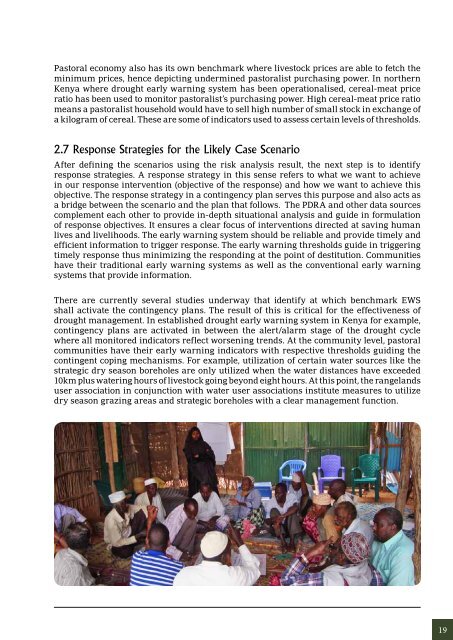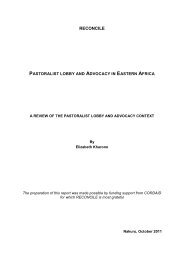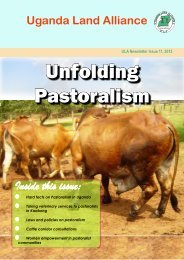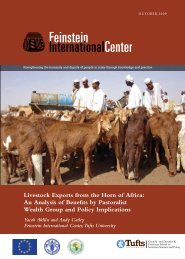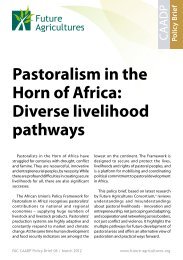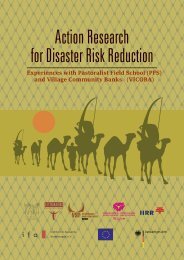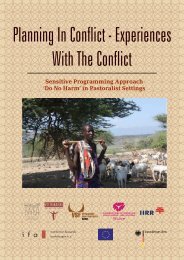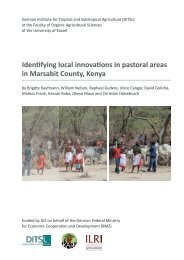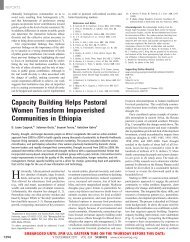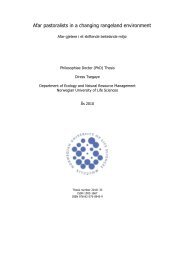Drought Contingency Planning with Pastoral Communities - celep
Drought Contingency Planning with Pastoral Communities - celep
Drought Contingency Planning with Pastoral Communities - celep
Create successful ePaper yourself
Turn your PDF publications into a flip-book with our unique Google optimized e-Paper software.
<strong>Pastoral</strong> economy also has its own benchmark where livestock prices are able to fetch the<br />
minimum prices, hence depicting undermined pastoralist purchasing power. In northern<br />
Kenya where drought early warning system has been operationalised, cereal-meat price<br />
ratio has been used to monitor pastoralist’s purchasing power. High cereal-meat price ratio<br />
means a pastoralist household would have to sell high number of small stock in exchange of<br />
a kilogram of cereal. These are some of indicators used to assess certain levels of thresholds.<br />
2.7 Response Strategies for the Likely Case Scenario<br />
After defining the scenarios using the risk analysis result, the next step is to identify<br />
response strategies. A response strategy in this sense refers to what we want to achieve<br />
in our response intervention (objective of the response) and how we want to achieve this<br />
objective. The response strategy in a contingency plan serves this purpose and also acts as<br />
a bridge between the scenario and the plan that follows. The PDRA and other data sources<br />
complement each other to provide in‐depth situational analysis and guide in formulation<br />
of response objectives. It ensures a clear focus of interventions directed at saving human<br />
lives and livelihoods. The early warning system should be reliable and provide timely and<br />
efficient information to trigger response. The early warning thresholds guide in triggering<br />
timely response thus minimizing the responding at the point of destitution. <strong>Communities</strong><br />
have their traditional early warning systems as well as the conventional early warning<br />
systems that provide information.<br />
There are currently several studies underway that identify at which benchmark EWS<br />
shall activate the contingency plans. The result of this is critical for the effectiveness of<br />
drought management. In established drought early warning system in Kenya for example,<br />
contingency plans are activated in between the alert/alarm stage of the drought cycle<br />
where all monitored indicators reflect worsening trends. At the community level, pastoral<br />
communities have their early warning indicators <strong>with</strong> respective thresholds guiding the<br />
contingent coping mechanisms. For example, utilization of certain water sources like the<br />
strategic dry season boreholes are only utilized when the water distances have exceeded<br />
10km plus watering hours of livestock going beyond eight hours. At this point, the rangelands<br />
user association in conjunction <strong>with</strong> water user associations institute measures to utilize<br />
dry season grazing areas and strategic boreholes <strong>with</strong> a clear management function.<br />
19


